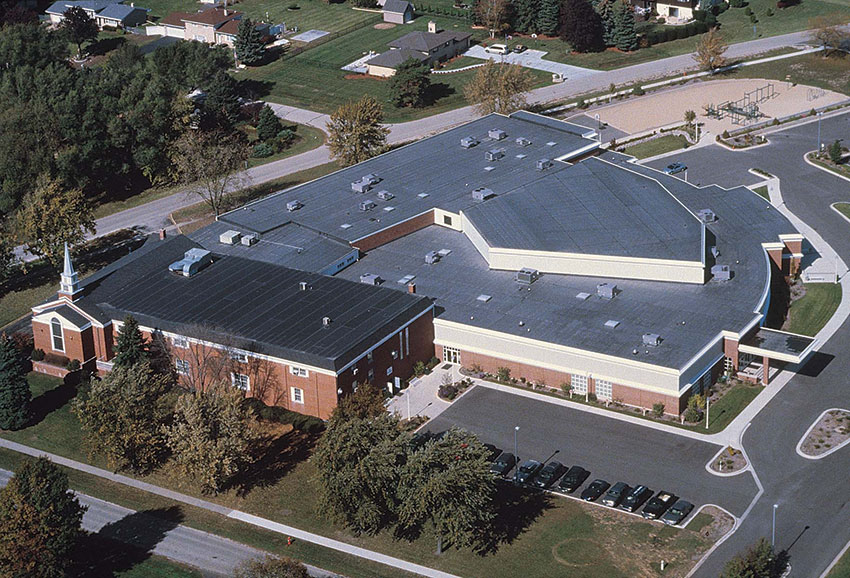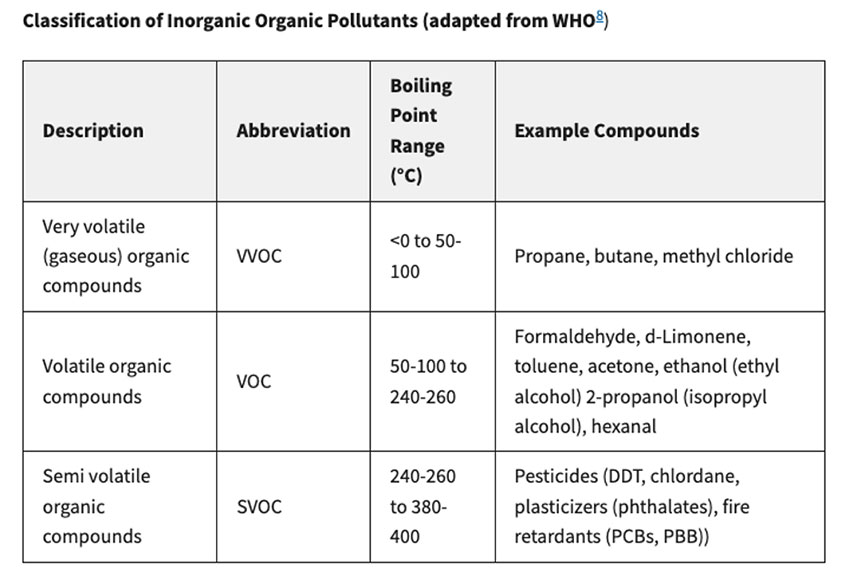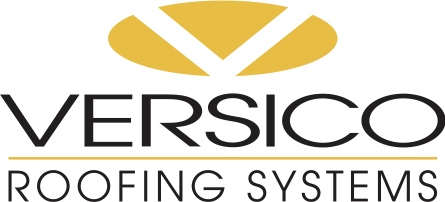Focus on Health in Roof Specification
 1 AIA LU/HSW; 1 GBCI CE Hour; 0.1 ICC CEU; 1 IIBEC CEH; 0.1 IACET CEU*; 1 AIBD P-CE; AAA 1 Structured Learning Hour; This course can be self-reported to the AANB, as per their CE Guidelines; AAPEI 1 Structured Learning Hour; This course can be self-reported to the AIBC, as per their CE Guidelines.; MAA 1 Structured Learning Hour; This course can be self-reported to the NLAA.; This course can be self-reported to the NSAA; NWTAA 1 Structured Learning Hour; OAA 1 Learning Hour; SAA 1 Hour of Core Learning
1 AIA LU/HSW; 1 GBCI CE Hour; 0.1 ICC CEU; 1 IIBEC CEH; 0.1 IACET CEU*; 1 AIBD P-CE; AAA 1 Structured Learning Hour; This course can be self-reported to the AANB, as per their CE Guidelines; AAPEI 1 Structured Learning Hour; This course can be self-reported to the AIBC, as per their CE Guidelines.; MAA 1 Structured Learning Hour; This course can be self-reported to the NLAA.; This course can be self-reported to the NSAA; NWTAA 1 Structured Learning Hour; OAA 1 Learning Hour; SAA 1 Hour of Core Learning
Learning Objectives:
- Explain how indoor and outdoor VOCs can negatively impact occupants, installers, and the environment.
- List state and federal regulations that impact the allowed VOC content in roofing applications.
- Discuss innovative options in single-ply roofing materials and installation techniques that offer low and no-VOCs.
- Identify building owner benefits to installing a low- or no-VOC roofing system, including a healthier renovation project and potential green building credits.
This course is part of the Commercial Roofing Academy
Finding new and innovative ways to protect the health and well-being of occupants during renovations in commercial construction is a persistent concern for architects, builders, and building owners. Today innovations and new products in roofing materials help facilitate a more toxin-free jobsite for occupants, neighbors, and contractors, helping as well with the health and sustainability of the planet.

Photo courtesy of Versico Roofing Systems
Single-ply roofing remains the most popular choice for commercial buildings, however understanding the impact of VOCs and the health of the community should be of concern when specifying projects.
Of main concern in roofing materials are Volatile Organic Compounds (VOCs), a group of airborne chemicals often found in adhesives, sealants, and coatings. VOCs are of concern as both indoor air pollutants and outdoor air pollutants. However, the emphasis for problematic VOCs is particular to outdoor environments as opposed to indoors.
Indoor VOCs form in fumes from roof sealants and adhesives that can adversely impact the health of people who have been exposed. Prolonged exposure to VOCs can lead to respiratory problems, aggravate existing conditions such as asthma, and cause long-term lung damage.
Outside, VOCs contribute to localized air pollution forming ground-level ozone when they react with nitrogen. For this reason, the U.S. Environmental Protection Agency (EPA) regulates VOCs outdoors mainly because of their potential to lead to photochemical smog under certain conditions.
This article will provide an overview of common VOCs found in roofing materials and describe how these chemicals can negatively impact occupants, neighbors, and workers. It will also discuss how VOCs outside are differentiated by the EPA, how they are measured, and the negative impacts they can have on local air pollution and the environment. To help provide direction for architects and builders, the article will discuss low and no-VOC options in roofing materials and provide direction on jobsite management and scheduling to help reduce the risk of VOC exposure. Finally, the article will provide alternatives to traditional single-ply roofing systems that can help promote sustainability, such as bio-based roofing materials that increase the health and welfare of occupants and installers and also qualify for green building certification programs.
THE BASICS OF IAQ
Health, safety, indoor air quality, sustainability–all these terms have been drawn into the spotlight for builders over the past decade. Commercial building owners looking to improve productivity and employee morale are asking to incorporate biophilia and natural daylighting into office designs. Developers trying to attract more environmentally savvy clients are including onsite renewable energy options and high-performance homes, and legitimate concerns about climate change and the impact the built environment is having on the Earth have also contributed to the demand for a change in the way we design, build, and maintain structures.
While many of the elements that define a healthy and sustainable project like energy efficiency, durability, storm resiliency, and basic ventilation have been codified, other factors that impact the health and well-being of occupants, and the planet, are yet to be regulated. Embodied and operational carbon, for example, has yet to be clearly quantified but is likely to be regulated at some level in the not-so-distant future. To develop a positive reputation builders must keep abreast of the demands of the consumer, the interests of the market, and the requirements of basic building code.
A persistent driver in healthier homes and a sustainable planet is air quality, both indoor and out of doors. Many consumers are well-informed on the dangers of poorly ventilated homes, offices, and schools. From this group of educated consumers, most are familiar with the oft-quoted message from the U.S. Environmental Protection Agency (EPA) that studies of human exposure to air pollutants indicate that indoor levels of pollutants may be two to five times–and occasionally more than 100 times–higher than outdoor levels, and that the main concern is that most people spend about 90 percent of their time indoors.1
The laundry list of indoor toxins can be lengthy and usually includes pet dander, mold, dust, pollen and other allergens, carbon monoxide, tobacco smoke, radon, and pesticides. The potential health risks of poor IAQ can be minor, such as simple sniffles or mild headaches. However, the EPA warns the impact could be more threatening in vulnerable populations, for instance, occupants with existing health issues like asthma, or the young and the old with the potential for severe respiratory diseases and long-term disability.
When addressing issues related to poor IAQ, a common culprit–and one that consumers are increasingly aware of–is volatile organic compounds, or VOCs.

Photo courtesy of Versico Roofing Systems
Improving the sustainability aspects of a project can include everything from enhanced protection from the elements to rooftop gardens, however, the sealants and adhesives used should also be considered.
VOCS–THE BIG PICTURE
Without getting too pedantic, let’s break down the definition of VOCs, just to get a solid foundation on how they are defined, and why architects, builders, building owners, and occupants need to be aware of them.
The generally accepted scientific definition of what constitutes a material as a VOC is a chemical compound whose composition makes it possible for it to evaporate under normal indoor atmospheric conditions of temperature and pressure. When a material reaches the boiling point, it turns from liquid to gas, and all the molecules at the surface are released as vapor into the air. Water, for instance, has a boiling point at sea level of 212°F (100°C). The boiling point goes down as we climb in elevation due to less atmospheric pressure on the surface of the water. At 3,000 feet above sea level, water boils around 206°F; at 10,000 feet above sea level the boiling point is 194°F.
Water is inert and other than increasing the humidity in the room not likely to cause major harm to occupants as it evaporates. Formaldehyde, however, with a boiling point of -2.2°F (-19°C) is a known VOC and is often found in manufactured wood products like flooring and furniture, and is found in tobacco smoke. Exposure to formaldehyde can irritate the skin, throat, lungs, and eyes while repeated exposure can possibly lead to cancer. With a boiling point so low, formaldehyde will instantly begin to vaporize when exposed to air at room temperature. But boiling point is only part of the equation, the other factor that impacts the release of VOCs into the air is vapor pressure.

Image courtesy of the U.S. EPA
This chart shows how the World Health Organization defines VOCs based simply on boiling points.










